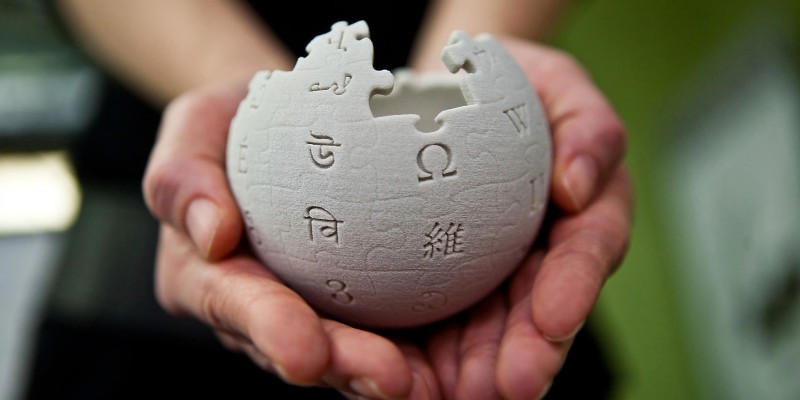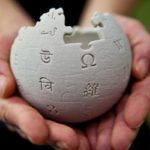The webgiants as media platforms: risk or opportunity for journalism?

Event data
- Datum
- 14. 3. 2016
- Host
- Friedrich Funder Institut
- Location
- Management Club Wien
- Event-type
- Panel discussion

Podium:
- Martin Gaiger, Telekurier
- Lisa Stadler, der Standard.at
- Gerold Riedmann, Vorarlberger Nachrichten/Russmedia
- Sebastian Loudon, Zeit Österreich
Moderation: Dinko Fejzuli, Medianet
To Lisa Stadler, instant articles are an advantage for the media platforms’ advertising clients, as they can increase their reach via Facebook. Since the contents are stored on Facebook servers (and no longer on the media company’s servers), the content producers lose control and visibility (between hundreds of providers, one’s own logo quickly gets lost). What’s more, Facebook & Co decide about the filter of the algorithms. If only trash is pushed here, it will be difficult for more complicated content to obtain coverage.
If you want to distribute simple content, for example the magazine ‘Miss’ of publishing house Styria, it works very well on Facebook. With quality journalism, that is more difficult – among other reasons, because the media houses have not yet learned to sell their quality products well (presentation, images etc). Often they save in the wrong places, even leading up to work stoppages.
70% of young people consume online content. The industry will have to adapt to the audience and edit the products accordingly, to address this target group.
Stadler looks on the Webgiants’ occurrence both as an opportunity and a risk: control of content is at risk, awareness must be created among users, that Facebook only ever represents excerpts. If you go directly to the platform of the medium, you have anonymity, no cookies spying on you and more detailed articles. Perhaps through this awareness-raising (“educating the user”) money can be made for the media in the long run, as well.
Gerald Riedmann sees the loss of control as the greatest danger. Also, because Facebook defines its own rules about which content may be posted, and which will be deleted. He mentioned “nipples instead of agitation” (nippelstatthetze) as an example.
Riedmann perceives recent years as a lenten period of the media industry, which led to a need to once again focus on the important things. The discrepancy between users’ mobile requests (50% +) and mobile revenue through advertisers (5%) is huge. With the instant articles, this gap may be closed. In 2016, it will be essential at any rate, that the traditional media companies bring their content to many platforms or distribution channels, for one has to fetch the customer from where he is at. Still, the focus must be on the content, and not the channels. It would clearly be best, if print newspaper and online presence were separated entirely, and the online sector did not show its premium content on Facebook.
While 100 percent of the income which online media generate through their platforms in collaboration with Facebook, is ceded to ther partner by the latter, Google is aiming for a 70/30 split. He agrees that one must work on user loyalty.
What is important, is the owners’ intention. If preliminary profits are paid out, there are other objectives than if financial resources are transferred to areas that appear promising from branches obviously on the descent, but still profitable.
Using the example of When & Where, a print format of their own making, Riedmann illustrates that the analogue newspaper still works, even with younger generations. In Vorarlberg, the magazine, which he refers to as “printed Facebook” has a range of 52% among youths. Young people at all times have been known to rarely read a classic newspaper, so this is not a new trend. Since we are still in the stone age of the mobile age, the further development of the media is completely open.
The sharing of articles on Facebook is still more popular than screenshots – “this was in the newspaper” has its own importance for many people, still.
When asked about the role of the media as the fourth power in the state, he gives the example of pro publica, a successful, independent American online journalists platform. The aim is to train the employees in the additional requirements of journalism today, as well: taking pictures, shooting short videos, blogging, twittering, etc. But the basic functions of journalism must not be lost from sight.
The great danger with Webgiants he sees, is that they use algorithms that adapt to the user and thereby act as huge blinders: because the more a user feeds the Algorithm with their data / requests, the more precisely it trims the information passed to the user.

Martin Gaiger who has already gone through many professional positions in the online arena wants to fetch the users where they read. Telekurier has 60% direct users (Zeit online 70%), only 25% come to the site from search engines (Focus online in Germany is banking on search engines for the most part). The team uses 23 digital distribution channels and all sorts of forms of presentation (teaser, link, article etc ). The greatest danger is the brand loss, since while having to compete with hundreds of suppliers worldwide, (and not only nationally, as is usually the case with the print media), it is difficult to establish oneself as a brand, especially if Facebook and Google take the notice. The monetization of the online market he sees as a big challenge – finding formats readers are willing to pay for, is extremely difficult.
As a test, Telekurier installed a video wall in their newsroom, where one could watch how user traffic responds when an article’s title or specific content is changed. This knowledge, however, can cause a dangerous feedback among journalists, that should not be underestimated in critical journalism. Clickbaiting is particularly suitable for simple content such as the famous listicles “10 photographs that changed the world”. The dumber, the Facebook, is a trend currently notable.
The media industry has changed more heavily in the past decade, than ever before. The evolution is in full swing, it is difficult to evaluate, which of today’s varieties will still be around ten years from now. Basically, it is important for any newspaper how it wants to evolve, including the adjustment to the new media usage. However, the rescue can not be, to try and faithfully transfer the concept of a printed newspaper to an online medium as it is – that will inevidably fail. The connection between online and print (even if they are united in one media house) will decrease. However, there is certainly something to be learned in terms of design / advertising / strategy of print media from the new media.
The issue of the Webgiants creating blinders, rightfully raised by Riedmann, Gaiger regards as resolved in his house: the contents for Telekurier will continue to be produced by journalists (neither Google nor Facebook employ this occupation). As an optimist he sees the challenge by large corporations as an opportunity rather than a risk.
Sebastian Loudon also sees the trademark issue in times of global competition. This can be countered by developing one’s own unique tonality, wrapping content in humor, for instance. If you, as a journalist, were to write an article that was then tweeted by Armin Wolf, you’d immediately have a long reach and, when writing new content, might be tempted to present them in a similar manner using similar channels in order to reap another high-reach (and thus advertising)-success.
He describes the title of the discussion with an analogy: the owner of a six-star hotel (Facebook) invites the entertainers (journalists) to entertain guests at his pool. The entertainer’s yield is, that they are allowed to advertise the bar around the corner (their own online media).
For existing media he sees major challenges in today’s world. Most media are in a certain disorder, they want to be in on everything without considering whether one can generate revenue with one or the other strategy long term. Much energy is invested in these areas, at the expense of the sector which still generates the highest net value: the print medium.
For newly established media on the other hand, the current situation is an immense opportunity, because there’s little need to invest in infrastructure and only small costs to carry otherwise, as well. He would start no blog, but post directly to Facebook.
Loudon talks about an interview with Mario Garcia, who, besides print media, has also accompanied numerous companies’ online appearances, and who told him just what is expected of a journalist today: next to a tweet before the interview, shoot the accompanying photos, a short video for the blog, after that make a brief summary for the rushed reader, a detailed file for interested parties, a comment for any other media … and all that in the shortest time possible. This going at the expense of content, can only be avoided long term, by investing in personnel.
He still sees a market for print media in the future, the rhythm however will have to adapt (weekly, monthly, etc). There will still be an audience waiting for detailed articles and follow-ups.
Critical journalism is in a very different space now, than it used to be when the journalist, for the most part, was the one setting or retaining topics (privacy of politicians etc). Today, that possibility is open to anyone. Edwards Snowden made use of the independent journalist Glenn Greenwald, to bring his information to light. Journalists today are to be regarded as curators, rather.
Facebook and Google (in another analogy), he sees as a large dog running towards you, and you just don’t know whether it wants to bite or merely lick you. But – as with the dog – it’s best not to show any fear.
Ebook: Things due to change in Content-Marketing in 2016
Translation from german: Serena Nebo
Credits
| Image | Title | Author | License |
|---|---|---|---|
 |
webgiganten | Wikimedia | CC BY-SA 3.0 |
